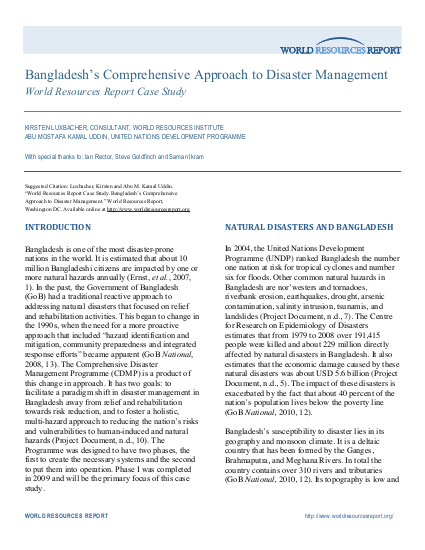
Bangladesh is one of the most disaster-prone nations in the world. It is estimated that about 10 million Bangladeshi citizens are impacted by one or more natural hazards annually (Ernst, et al., 2007, 1). In the past, the Government of Bangladesh (GoB) had a traditional reactive approach to addressing natural disasters that focused on relief and rehabilitation activities. This began to change in the 1990s, when the need for a more proactive approach that included “hazard identification and mitigation, community preparedness and integrated response efforts” became apparent (GoB National, 2008, 13). The Comprehensive Disaster Management Programme (CDMP) is a product of this change in approach. It has two goals: to facilitate a paradigm shift in disaster management in Bangladesh away from relief and rehabilitation towards risk reduction, and to foster a holistic, multi-hazard approach to reducing the nation’s risks and vulnerabilities to human-induced and natural hazards (Project Document, n.d., 10). The Programme was designed to have two phases, the first to create the necessary systems and the second to put them into operation. Phase I was completed in 2009 and will be the primary focus of this case study.